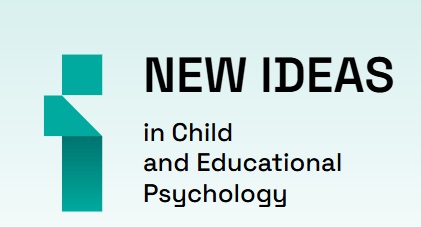Article
Almazova O.V., Dolgikh A.G., Molchanov S.V., Agarkov D.V., Denisenko S.O., Levshina M.A., Lysaya T.E., Mariin S.S., Samuylova O.S. (2019). The Peculiarities of Adolescents’ Perceptions of Peer Profile Users of Social Networks. Moscow University Psychology Bulletin, 4, 21-43
Abstract
Background. The relevance of this study is associated with the widespread use of social media by adolescents with a high risk of turning to aggression and violence.
Objective. The purpose of the study is to investigate the characteristics of adolescents' perceptions of peer profiles in social networks that vary in degrees of “security,” and their readiness to carry out various communicative actions depending on their psychological characteristics. We hypothesized that: 1) There is a connection between the psychological characteristics of adolescent users of a social network, and their ability to differentiate profiles of peers-users of social networks and communicative actions in social networks; and 2) The oculomotor activity of adolescent users of social networks is associated with the degree of attractiveness of a peer profile.
Design. We used the methods of “Peer attachment” (G. Armden, M.T. Greenberg, 1987 as adapted by G.V. Burmenskaya, 2015); Emotional intelligence (D.V. Lyusin, 2009); Recognition of emotions by sight (S. Baron-Cohen et al., 2001); cognitive methods for assessing social information (S.V. Molchanov et al., 2018); eye-tracking technique; and conversation. The study included 40 adolescents 14 to 17 years old.
Results.We distinguished three groups which differed in their attachment to peers, emotional intelligence, and cognitive methods of processing social information; they comprised three types – “idealizing,” “selective,” and “cautious.” We showed that the "selective type" is characterized by the highest degree of differentiation of "dangerous" and "safe" profiles of peers in social networks, and high selectivity in implementing various communicative actions. The greater attractiveness of the main information in a peer’s profile is reflected in more fixations, fixation time, and returns to the zone.
Acknowledgments.This work was financially supported by the Russian Federal Property Fund No. 18-013-01080 “Cognitive methods for processing social information from the Internet as a factor in the formation of adolescents' ideas about the moral regulation of relations in the modern information society”.
Sections: Empirical studies;
Theoretical studies;
Received: 08/10/2019
Accepted: 10/01/2019
Pages: 21-43
DOI: 10.11621/vsp.2019.04.21
Keywords: social networks; adolescence; cognitive methods of social information processing;
Available Online 31.08.2019
Armsden G. C., Greenberg M. T. (1987). The Inventory of Parent and Peer Attachment: Relationships to well-being in adolescence. Journal of Youth and Adolescence, 16(5), 427-454.
Baron-Cohen S., Wheelwright S., Hill J., Raste Y., Plumb I. (2001). The «Reading the mind in the eyes» test revised version: a study with normal adults and adults with aspergersyndrom or high-functioning autism. Journal Child Psychology Psychiatry, 42(2), 241-251.
Belinskaya E. P. (2013). Psikhologiya internet-kommunikatsii: ucheb. Posobie [The Psychology of Internet Communication].Moscow, Voronezh.
Bochaver A.A., Khlomov K.D. (2014). Kiberbulling: travlya v prostranstve sovremennykh tekhnologiĭ [Cyberbullying: bullying in the space of modern technology] Psikhologiya. Zhurnal vyssheĭ shkoly ekonomiki [Psychology Journal of Higher School of Economics], 11(3), 177–191.
Burmenskaya G.V., Almazova O.V. (2015). Vzaimootnosheniya brat'ev i sester i ikh svyaz' s privyazannost'yu k materi [Relations between brothers and sisters and their relationship with mother affection]. Voprosy psikhologii [Psychology Issues], 4. 15-25.
Kovalev, A., Menshikova, G., & Zinchenko Y. (2016). Eye movements characteristics as indicators of ethno-cultural identity. International Journal of Psychophysiology. 108, 146. DOI: doi.org:10.1016/j.ijpsycho.2016.07.424.
Lyusin D.V. (2009). Oprosnik na emotsional'nyi intellekt EmIn: novye psikhometricheskie dannye [Emin Emotional Intelligence Questionnaire: New Psychometric Data]. Sotsial'nyi i emotsional'nyi intellekt: ot modelei k izmereniyam [Social and emotional intelligence: from models to dimensions]. In. D.V. Lyusina, D.V. Ushakova (ed). Moscow, Institut psikhologii RAN. 264 – 278.
Martsinkovskaya T.D. (2012). Informatsionnaya sotsializatsiya v izmenyayushchemsya informatsionnom prostranstve [Information socialization in a changing information space Psikhologicheskie issledovaniya [Psychological research]. 5, 26, http://psystudy.ru/num/2012v5n26/766-martsinkovskaya26. html (data obrashcheniya: 09 .09 .2018).
Men'shikova G.Ya., Kovalev A.I., Lunyakova E.G. (2017).Vliyanie rasovoĭ prinadlezhnosti litsa na vyrazhennost' effekta vzglyada-podskazki: metod aĭtrekinga [The influence of racial affiliation of a person on the severity of the effect of gaze-prompts: aitracking method]. Natsional'nyĭ psikhologicheskiĭ zhurnal [National Psychological Journal], 2(26), 46-58.
Molchanov S.V., Almazova O.V., Poskrebysheva N.N. (2018). Kognitivnye sposoby pererabotki sotsial'noĭ informatsii iz Internet-seti v podrostkovom vozraste [Cognitive methods of processing social information from the Internet in adolescence] Natsional'nyi psikhologicheskii zhurnal [National Psychological Journal],31(3), 57-68.
Molchanov S.V., Almazova O.V., Poskrebysheva N.N., Kirsanov K.A. (2018). Kognitivnye sposoby pererabotki sotsial'noi informatsii v seti internet i osobennosti moral'nogo soznaniya podrostkov [Cognitive methods of processing social information on the Internet and the peculiarities of the moral consciousness of adolescents]. Psikhologicheskaya nauka i obrazovanie [Psychological Science and Education],23(5), 77-86.
Soldatova G.U., Rasskazova E.I. (2014). Bezopasnost' podrostkov v internete: riski, sovladanie i roditel'skaya mediatsiya [The safety of adolescents on the Internet: risks, coping and parental mediation]. Natsional'nyĭ psikhologicheskiĭ zhurnal [National Psychological Journal]. 3 (15). 39-51. DOI: doi.org: 10.11621/npj .2014 .0305 .
Soldatova G.V., Zotova E.Yu. (2011).Kiberbulling v shkol'noĭ srede: trudnaya onlaĭn-situatsiya i sposoby sovladaniya [Cyberbullying in the school environment: a difficult online situation and coping methods]. Obrazovatel'naya politika [Educational Policy], 5 (55), 11-22.
Voĭskunskiĭ A.E. (2017). Internet kak prostranstvo poznaniya: psikhologicheskie aspekty [The Internet as a Space of Knowledge: Psychological Aspects]. Sovremennaya zarubezhnaya psikhologiya [Modern foreign psychology], 4, 72–86.
Wu, E. X., Laeng, B., & Magnussen, S. (2017). Through the eyes of the own-race bias: Eye-tracking and pupillometry during face recognition. Social Neuroscience, 7, 202–216. DOI: doi.org: 10.1080/17470919.2011.596946 .
For citing this article:
Almazova O.V., Dolgikh A.G., Molchanov S.V., Agarkov D.V., Denisenko S.O., Levshina M.A., Lysaya T.E., Mariin S.S., Samuylova O.S. (2019). The Peculiarities of Adolescents’ Perceptions of Peer Profile Users of Social Networks. Moscow University Psychology Bulletin, 4, 21-43









